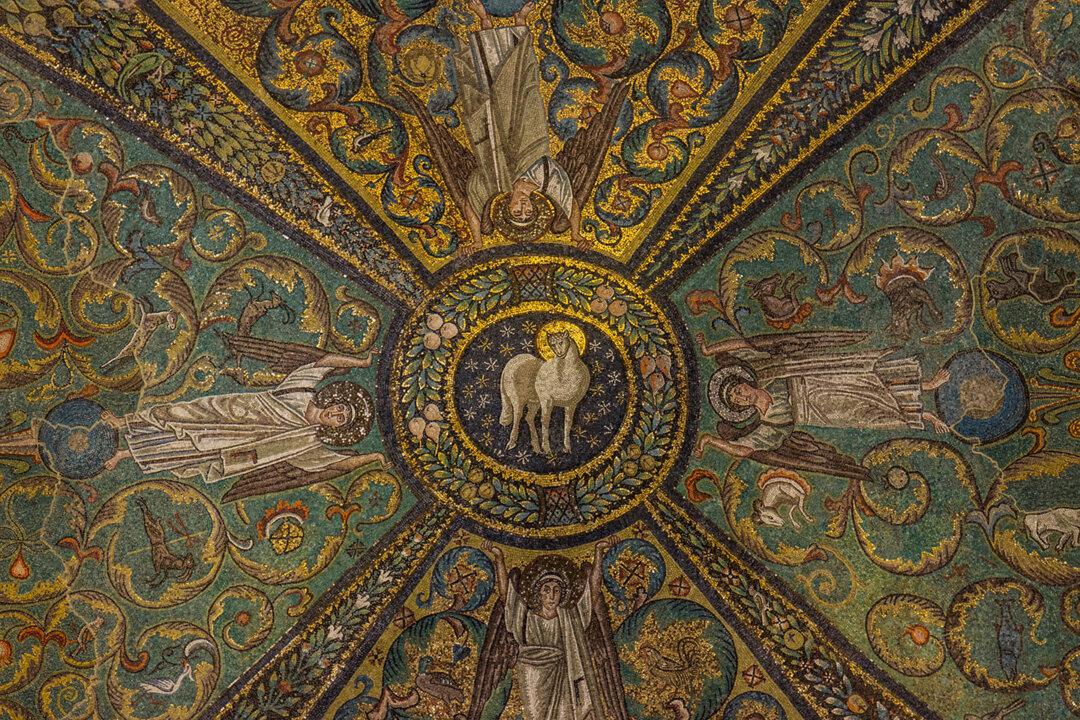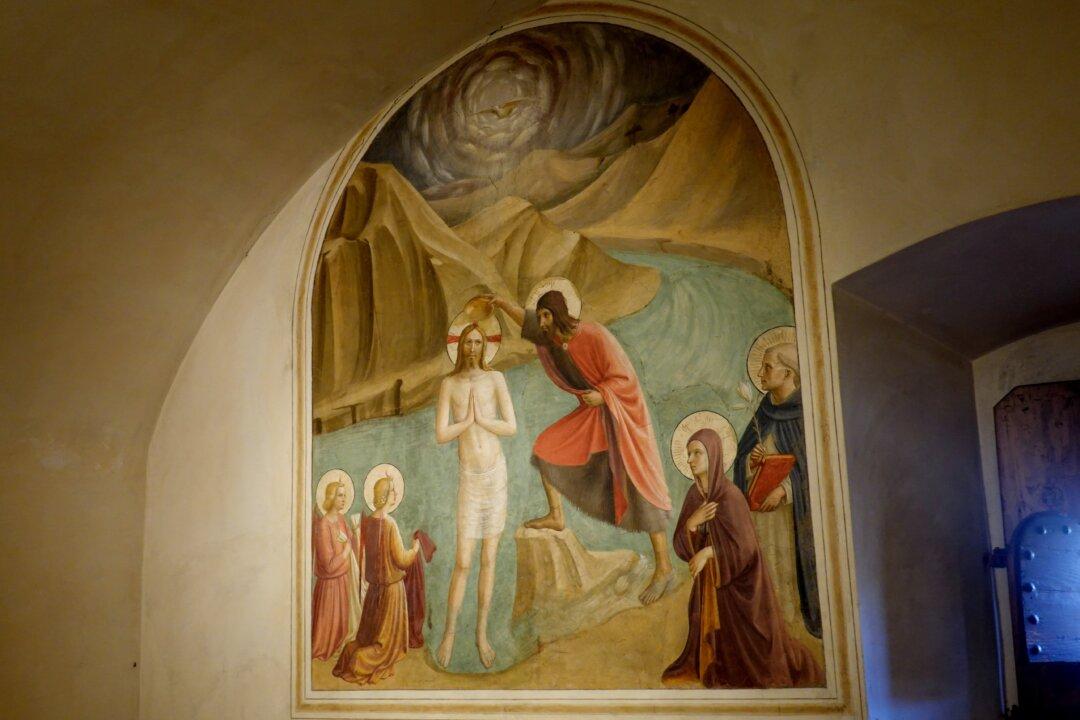Upon seeing Jesus, John the Baptist declared, “Behold the Lamb of God who takes away the sin of the world” (John 1:29). Christian art often uses a lamb to depict Christ.
An early example of this is in the dome of the presbytery at the Basilica of San Vitale in Ravenna. The splendid mosaic ornamentation there converges on a depiction of the Lamb of God. Vivid festoons of leaves, flowers, rams, stags, fruit, birds, and stars animate the cross-ribbed vault and the tesserae gleams as if radiating light. The four angels support the central crown of figs that encircling the Lamb of God. Rendered in the Hellenistic-Roman style, the mosaics at San Vitale are dynamic and richly colorful, an embodiment of the jeweled style of late antiquity.






